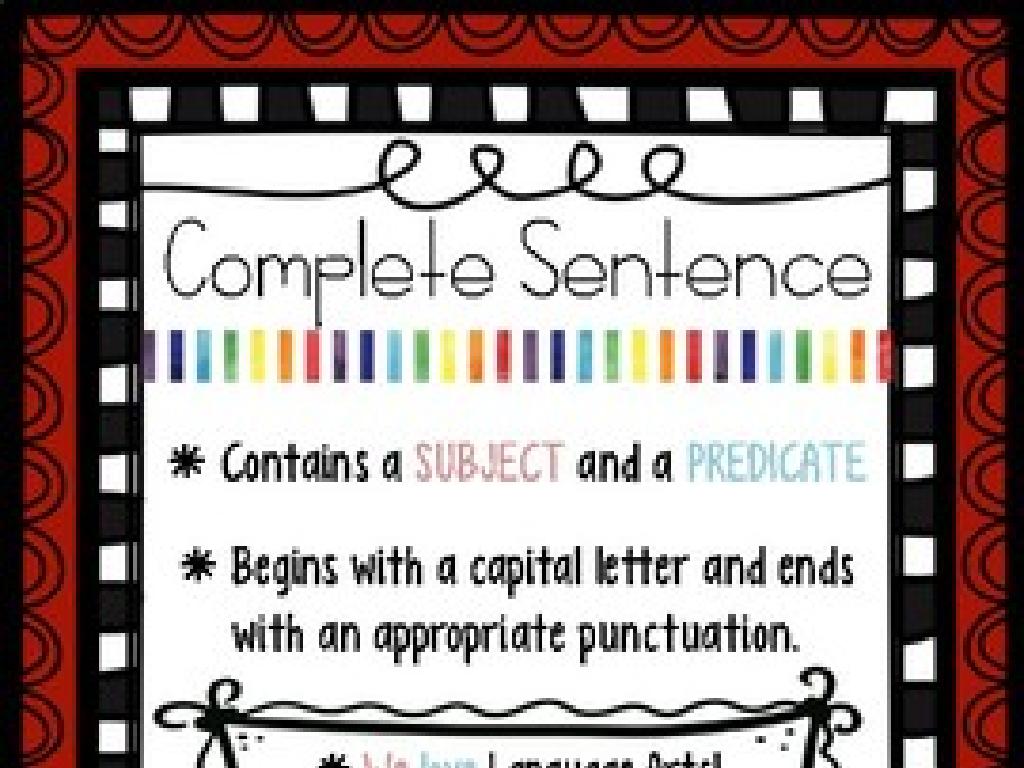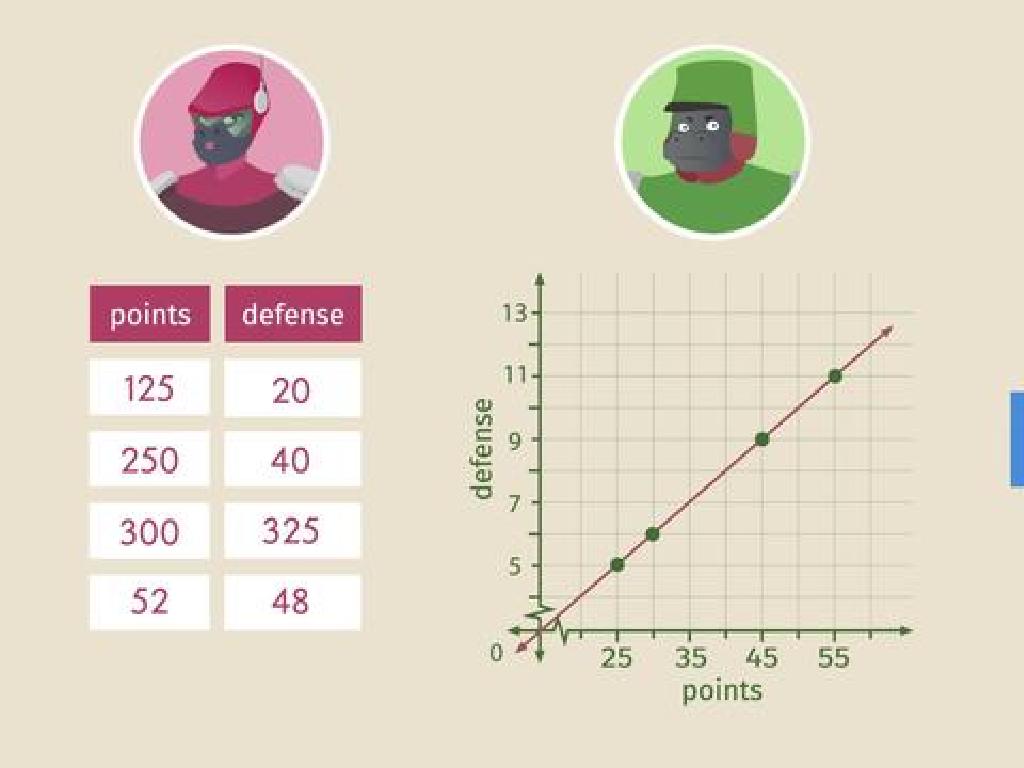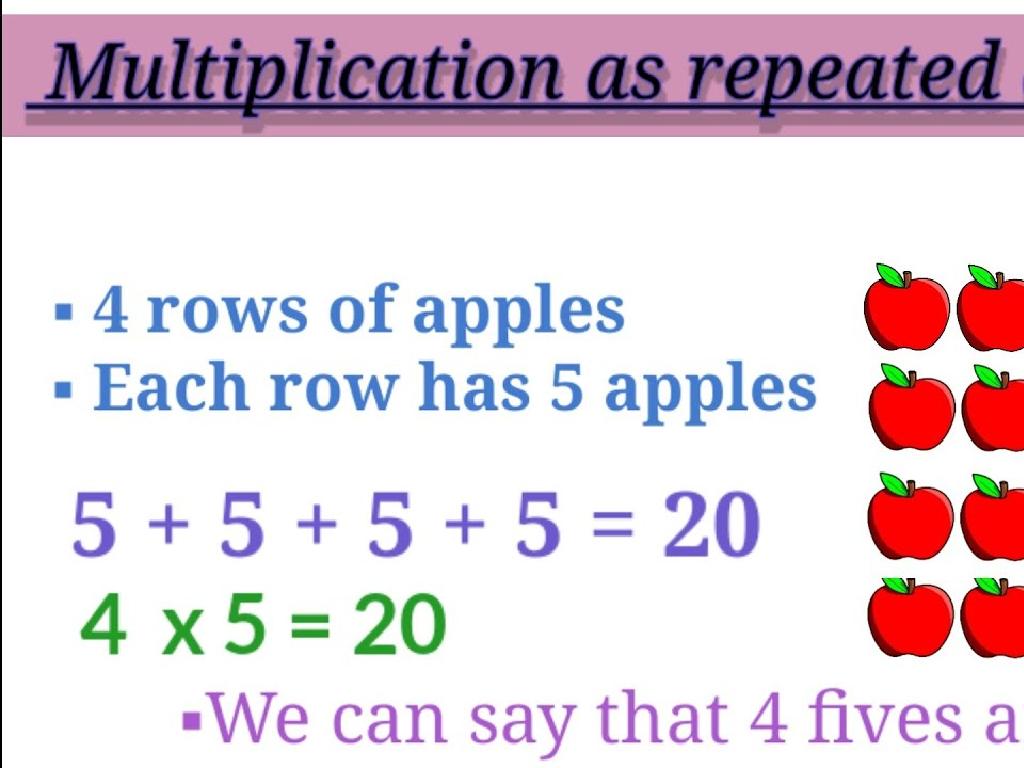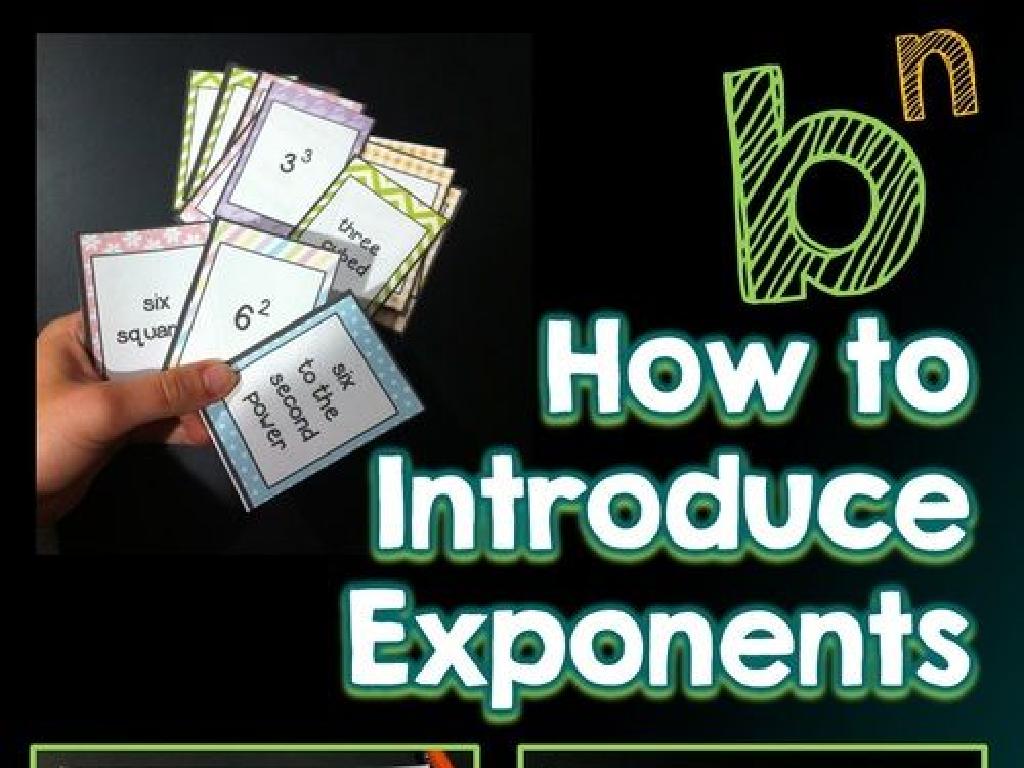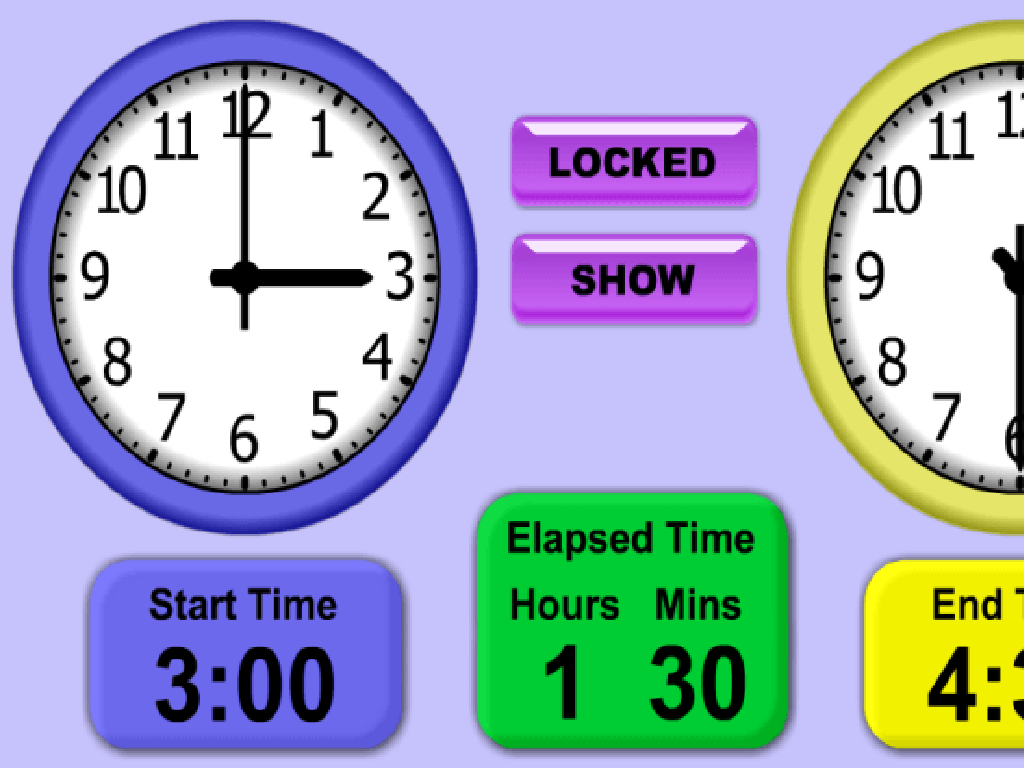Identify Faces Of Three-Dimensional Shapes
Subject: Math
Grade: Second grade
Topic: Three-Dimensional Shapes
Please LOG IN to download the presentation. Access is available to registered users only.
View More Content
Welcome to 3D Shapes!
– Understanding 3D shapes
– Objects that have length, width, and height
– Importance of 3D shapes
– They help us describe objects around us
– Daily life 3D shape examples
– Balls are spheres, boxes are cubes
– Recognizing shapes around us
– Find shapes in the classroom or at home
|
This slide introduces second-grade students to the concept of three-dimensional shapes. Begin by explaining that unlike flat shapes, 3D shapes have three dimensions: length, width, and height. Emphasize the importance of 3D shapes in understanding and describing the world around us. Provide relatable examples such as balls representing spheres and boxes representing cubes. Encourage students to look around their environment, both in the classroom and at home, to identify objects that correlate with 3D shapes they learn about. This will help them connect the lesson to real-world objects and understand the relevance of 3D shapes in their daily lives.
Exploring 3D Shapes
– 3D shapes have 3 dimensions
– Length, width, and height make up 3D shapes
– 2D vs 3D shapes
– 2D shapes are flat, 3D shapes are not
– Find 3D shapes in our world
– Look around to see cubes, spheres, and cones
– Activity: 3D shape hunt
|
Introduce students to the concept of three-dimensional shapes by explaining that unlike 2D shapes, 3D shapes have depth in addition to length and width. Use everyday objects to illustrate the difference between 2D and 3D shapes, such as comparing a drawing of a square (2D) to a box (3D). Encourage students to identify and name 3D shapes they encounter in their daily lives, like cans (cylinders) or balls (spheres). For the activity, have students go on a ‘shape hunt’ in the classroom or at home to find objects that match different 3D shapes. This will help solidify their understanding of the concept by applying it to real-world objects.
Faces of 3D Shapes
– What is a face on 3D shapes?
– Flat surfaces are faces
– Like a puzzle piece, each flat part is a face
– Count faces on 3D shapes
– Let’s count faces on cubes, spheres, and cylinders
– Practice with common shapes
– Try counting faces on a box or a ball at home
|
This slide introduces the concept of faces on three-dimensional shapes to second-grade students. Begin by explaining that a face is any flat surface on a 3D shape, similar to a single sticker on a Rubik’s cube. Show them various 3D shapes like cubes, spheres, and cylinders, and guide them to count the faces. For example, a cube has 6 faces, while a sphere has 1 curved face. Encourage the students to touch and count the faces on tangible objects. As an activity, ask students to bring simple 3D-shaped objects from home and practice counting the faces. This hands-on experience will help solidify their understanding of the concept.
Let’s Explore Cubes!
– A cube has 6 faces
– Each face is a square
– Find cube-shaped objects
– Look around the room for any cube-like items
– Discuss our findings
– We’ll talk about the cube items we find
|
This slide introduces students to the concept of a cube and its properties. Emphasize that a cube is a special kind of three-dimensional shape that has six faces, and each face is shaped like a square. Encourage the students to look around the classroom for objects that have the shape of a cube, such as dice, boxes, or blocks. This activity will help them recognize cubes in the real world and understand that the faces of these cubes are squares. After the search, have a discussion where students can share the cube-shaped objects they found and describe their faces. This will reinforce their understanding of the cube’s characteristics and how to identify them in everyday objects.
Faces of a Sphere
– A sphere has one curved face
– Spheres in everyday life
– Like a basketball or a globe
– Can we stack spheres?
– Think about stacking basketballs
– Discuss stacking challenges
– Why might spheres be hard to stack?
|
This slide introduces the concept of a sphere by highlighting its unique characteristic of having only one curved face. Use familiar objects such as a basketball and a globe to help students visualize spheres in real life. Engage the class in a discussion about the practicality of stacking spheres, prompting them to think about the difficulties due to the shape’s curved surface. This will help them understand the concept of faces on three-dimensional shapes and how these faces can affect the object’s function and interaction with other objects. Encourage students to bring in examples from home or the playground to share with the class.
Exploring the Faces of a Cylinder
– A cylinder has 3 faces
– 2 faces are flat, 1 is curved
– Cylinders in everyday life
– Examples: a soup can, a drinking cup
– Class Activity: Find Cylinder Faces
– Touch and count the faces on a cylinder
|
This slide introduces students to the concept of faces on three-dimensional shapes, specifically cylinders. Start by explaining that a face is a flat or curved surface on a 3D shape. Highlight that a cylinder has two flat faces on the top and bottom, and one curved face around. Use everyday objects like cans and cups to illustrate cylinders in real life. For the activity, provide various cylinder-shaped objects for students to explore and interact with. Encourage them to touch and count the faces of the cylinders. This tactile activity will help solidify their understanding of the concept. Prepare to guide them through the activity and answer any questions they may have.
Faces of a Cone
– A cone has 1 flat face
– The flat face is the base of the cone
– And 1 curved face
– The curved face wraps around from the base to the tip
– Cones are like party hats
– Think of a birthday party hat or an ice cream cone
– Let’s draw a cone’s faces
|
This slide introduces the concept of identifying faces on three-dimensional shapes, specifically a cone. Start by explaining that a face is a flat or curved surface on a 3D shape. Show that a cone has one flat face, which is the base where it stands, and one curved face, which wraps around to form the cone’s body. Use familiar objects like party hats and ice cream cones to help students visualize. Then, engage the students in a drawing activity where they can draw and label the flat and curved faces of a cone. This will help solidify their understanding of the concept through a fun and interactive task.
Class Activity: Shape Hunt!
– Explore the classroom for 3D shapes
– Match objects to 3D shapes we know
– Draw the faces of each 3D object
– Cubes have squares for faces, cylinders have circles!
– Discuss the different faces found
|
This interactive activity is designed to help second graders recognize and identify the faces of three-dimensional shapes in their environment. Encourage the students to walk around the classroom and find real-life examples of 3D shapes such as cubes, cylinders, cones, and spheres. Once they find an object, they should try to draw the shapes of the faces they can see. For example, the face of a cube is a square, and the face of a cylinder is a circle. After the hunt, gather the students and discuss the different faces they found on each object. This will reinforce their understanding of 3D shapes and their properties. Possible variations of the activity could include grouping objects by the type of faces they have, counting the faces on each object, or even creating a 3D shape collage with drawings of the found objects.
Shape Hunt Review & Share
– Discuss our shape hunt findings
– Count faces on 3D shapes
– How many faces on a cube, sphere, cylinder?
– Share our shape drawings
– Show your drawings to classmates
– Reflect on what we learned
– What new facts about shapes did we discover?
|
This slide is meant to recap the shape hunt activity. Start by asking students to talk about the different three-dimensional shapes they found. Encourage them to describe the number of faces on each shape, such as a cube having 6 faces or a sphere having 1 curved face. Have students share their drawings with the class to create a collaborative learning environment. Use this opportunity to reinforce the vocabulary and properties of three-dimensional shapes. Ask guiding questions to help students articulate their understanding and to ensure they can identify and count faces on various shapes. This will help solidify their grasp of the concept.
Great Job on 3D Shapes!
– Celebrating our 3D shape masters
– Faces are flat surfaces on 3D shapes
– Like a cube has 6 faces, each a square
– Spot 3D shapes around you
– Find shapes like boxes, balls, and cans
– Keep practicing at home and school
|
This slide is meant to congratulate the students on their hard work in learning to identify the faces of three-dimensional shapes. It’s a wrap-up slide that reinforces the concept of faces as the flat surfaces of a 3D shape. Encourage the students to continue observing their environment to spot 3D shapes, such as cubes, spheres, and cylinders, in everyday objects at home and in school. This will help solidify their understanding and recognition of these shapes in a practical context. Remind them to keep practicing, as repetition will help them remember these concepts better.

